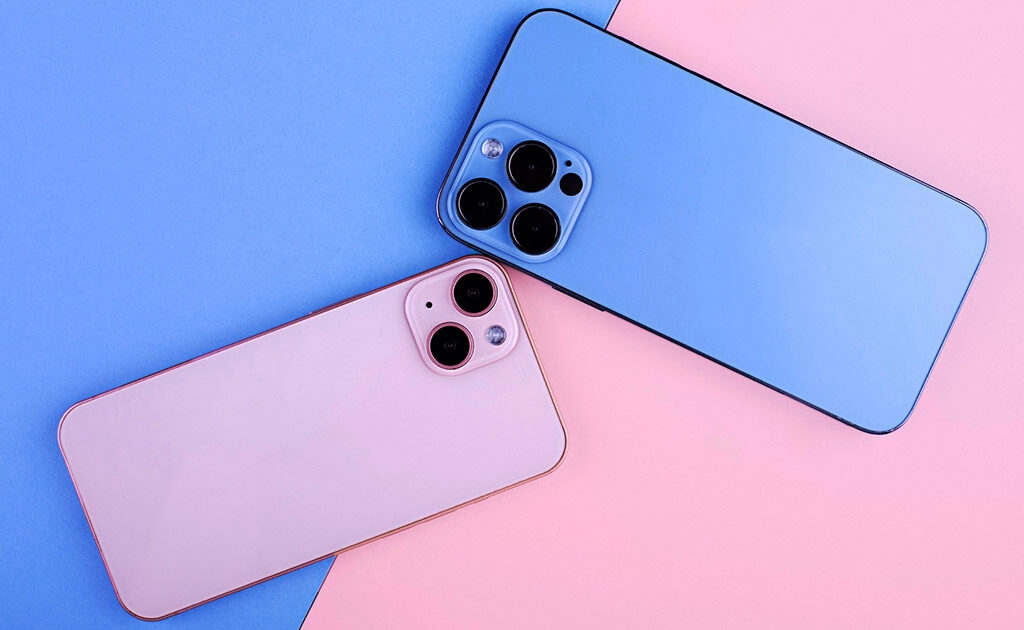
Blogs
The Prize for Ignorance

The Prize for Ignoring Digitalization: How Industry Leaders Became Cautionary Tales
Remember when Friday nights meant visiting your local Blockbuster to rent the latest releases, debating with friends over which movies to take home? Those nostalgic memories represent more than just cultural touchstones—they're artifacts from businesses that no longer exist because they failed to embrace digital transformation.
The stories of Blockbuster versus Netflix and MUSICA versus Spotify reveal a fundamental business truth: digitalization isn't optional, it's existential. For today's businesses across every sector, the lesson is clear: adapt to digital realities or risk becoming another case study in obsolescence.
Entertainment Revolutionized: How Netflix Rewrote Blockbuster's Final Chapter
In 2000, Blockbuster was the undisputed king of home entertainment. With over 9,000 stores worldwide and a market value of $5 billion, the company seemed untouchable. When a small DVD-by-mail service called Netflix approached Blockbuster with an acquisition offer, Blockbuster executives reportedly laughed them out of the room.
Fast forward to 2010—Blockbuster filed for bankruptcy while Netflix was transitioning from DVD rentals to streaming, positioning itself for unprecedented growth. By 2022, Netflix had over 220 million subscribers worldwide and was valued at over $100 billion, despite recent market fluctuations.
What happened? Blockbuster didn't just miss the streaming revolution—they actively resisted it. When they finally launched their own streaming service in 2004, it was hampered by outdated thinking: customers still needed to visit physical stores to sign up, and the company remained committed to its lucrative late fee model (which generated $800 million annually) despite customer frustration.
The Content Creation Pivot
Netflix's triumph wasn't just about distribution technology—it was about reimagining the entire business model. When studios began raising licensing fees for content, Netflix didn't just accept higher costs—they became content creators themselves.
With shows like "House of Cards" (2013) and "Orange is the New Black," Netflix transformed from a distribution platform to a full-fledged entertainment studio. This vertical integration gave them greater control over their destiny and reduced dependency on traditional studios.
Meanwhile, Blockbuster remained trapped in its retail mindset, unable to envision a world without physical stores as their primary touchpoint with customers. Their final store closures in 2014 marked the end of an era—and a stark lesson in the consequences of digital hesitation.
The Music Industry's Digital Revolution: When MUSICA Faced the Music
For South Africans, MUSICA wasn't just a music retailer—it was a cultural institution. With over 130 stores nationwide at its peak, the brand was synonymous with music discovery. Teenagers spent hours browsing through CDs, listening to samples at in-store stations, and discovering new artists through staff recommendations.
As streaming services gained momentum globally in the 2010s, MUSICA continued focusing on physical media sales. When Spotify launched in South Africa in 2018, MUSICA had no digital counter-strategy. By January 2022, MUSICA announced the closure of all its remaining stores, ending a 59-year legacy.
The timeline tells the story:
- 2008: Spotify launches in Sweden
- 2011: Spotify enters the US market
- 2018: Spotify launches in South Africa
- 2020: Digital music revenue surpasses physical sales by 4:1 in South Africa
- 2022: MUSICA closes its final stores
How Spotify Redefined the Music Experience
Spotify didn't just digitize music distribution—they reimagined the entire music consumption experience. Their algorithm-driven discovery tools, playlist curation, and social features created value beyond simple access to songs.
Most importantly, Spotify recognized that artists were essential partners, not just content providers. They developed tools for artists to promote their work, analyze listener data, and connect with fans. By establishing a platform that served both listeners and creators, Spotify built an ecosystem that physical retailers couldn't match.
By the time MUSICA recognized the existential threat of streaming, they lacked both the technical expertise and financial resources to build a competitive platform. Their story highlights a key lesson: digital transformation requires early commitment and investment—waiting until disruption is obvious is often too late.
Digitalization Beyond Entertainment: The Cross-Industry Impact
The Netflix and Spotify revolutions weren't isolated incidents—they were harbingers of changes that would sweep through virtually every industry:
- Education: Traditional universities faced competition from online learning platforms like Coursera and edX
- Retail: E-commerce grew from 5.1% of total retail sales in 2007 to over 20% by 2023
- Banking: Digital-only banks attracted millions of customers without opening a single branch
- Healthcare: Telehealth visits grew 38x from pre-pandemic levels
These shifts accelerated during the COVID-19 pandemic, but the underlying trend was established long before. Companies that had already invested in digital capabilities adapted quickly, while digital laggards scrambled to catch up—often too late.
Finding the Digital Sweet Spot
Importantly, digitalization doesn't mean abandoning physical presence entirely. The most successful companies have found their own "digital sweet spot"—the optimal balance between digital and physical customer experiences.
Take education: While e-learning platforms have seen explosive growth, they haven't eliminated traditional schools. Instead, we've seen the rise of hybrid learning models that combine the convenience of online learning with the value of in-person interaction.
Similarly, retail has evolved toward an omnichannel approach. Amazon—the quintessential e-commerce disruptor—has opened physical bookstores and grocery locations. The key is understanding which aspects of your business create the most value through digital channels versus physical ones.
Creating Your Digitalization Strategy: Assessing Your Digital Readiness
The first step in any successful digital transformation is an honest assessment of your current capabilities. This involves looking at:
- Customer journey touchpoints: Which interactions currently happen in person that could be enhanced or replaced by digital alternatives?
- Operational efficiency: Which internal processes rely on manual steps or paper-based systems?
- Data utilization: Are you capturing, analyzing, and acting on customer data effectively?
- Technology infrastructure: Do you have the foundations to support digital innovation?
The goal isn't digitalization for its own sake, but strategically applying digital tools to enhance your core value proposition. Netflix and Spotify succeeded not just because they went digital, but because their digital approaches solved fundamental customer problems better than physical alternatives.
Finding the Right Digital Mix
Effective digitalization rarely means a complete abandonment of physical operations. Instead, it requires finding the right mix of channels:
- Pure digital: Products and services delivered entirely online (e.g., digital downloads, information services)
- Digital-first: Primary interaction happens digitally, supported by physical operations (e.g., e-commerce with physical delivery)
- Digitally-enhanced physical: Core value delivered in person, supported by digital tools (e.g., restaurants with online reservations)
For service businesses where in-person interaction remains essential, digitalization can still transform customer experience. Consider how modern salons and medical practices have implemented online booking, digital intake forms, and automated appointment reminders—these digital enhancements improve the customer experience while preserving the core in-person service.
The Path Forward
The stories of Blockbuster, MUSICA, Netflix, and Spotify aren't ancient history—they're recent lessons in the consequences of digital hesitation versus digital embrace. Today's digital landscape offers even more opportunities and threats than these companies faced.
What makes digitalization particularly challenging is that it's not a one-time project—it's an ongoing journey. The companies thriving today are those that have built organizational capabilities to continuously evaluate and adopt new digital approaches as they emerge.
The businesses that will lead tomorrow aren't just implementing today's digital solutions—they're building the organizational muscles to identify and adapt to whatever comes next. They're asking: "How can we use digital tools to deliver more value to our customers?" rather than "How can we protect our existing business model?"
As you consider your own digitalization strategy, remember that the goal isn't technology adoption for its own sake—it's creating sustainable competitive advantage by meeting customer needs in ways that weren't previously possible.
The true prize isn't just avoiding the fate of Blockbuster or MUSICA—it's capturing the growth, efficiency, and customer loyalty that come from getting digitalization right. The question isn't whether your industry will be transformed by digital innovation, but whether your business will lead that transformation or become another cautionary tale.
The digital future is already here—it's just unevenly distributed. Where does your business stand?
Book Free Business Consultation with Exclusive Tech
Tring to figure out how to embrace the digital age can be challenging, especially knowing the right information on how to do t effectively and efficiently. Wondering is a Mobile App, Web Application, Website or a combination is the best option. The best way to implement all these.
If you are an entrepreneur trying to find your footing in the digital world, yet not sure where to start, you can Book a Free Business Consultation with Exclusive Tech today, and get comprehensive insights with actionable plan
About Exclusive Tech
Double Your Brand Sales & Lead Generation with Exclusive Tech
View all posts by Exclusive Tech







